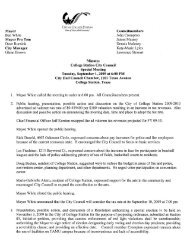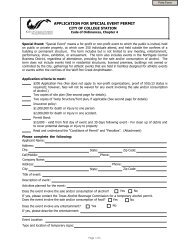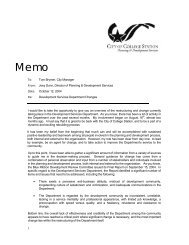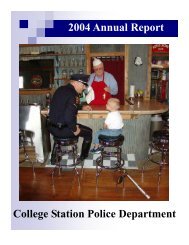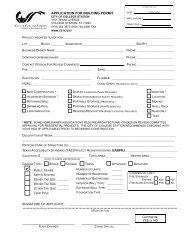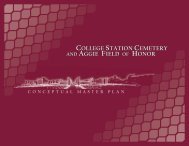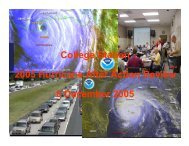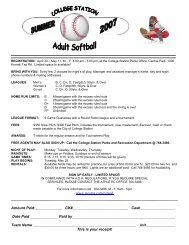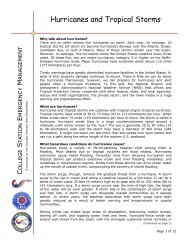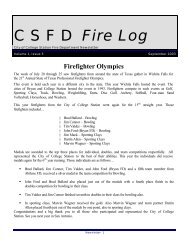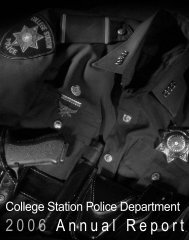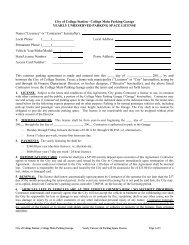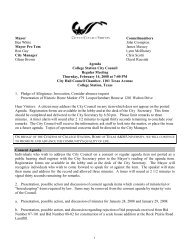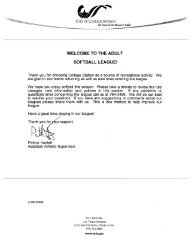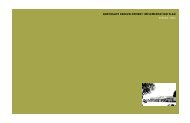standard operating procedure college station fire department
standard operating procedure college station fire department
standard operating procedure college station fire department
Create successful ePaper yourself
Turn your PDF publications into a flip-book with our unique Google optimized e-Paper software.
STANDARD OPERATING PROCEDURE<br />
COLLEGE STATION FIRE DEPARTMENT<br />
SUBJECT: Quantitative Fit Test (PortaCount Plus) SOP: 300.2.40<br />
CATEGORY: Fire Operations PAGE: 1 of 2<br />
APPROVED BY:<br />
Chief, Fire Department DATE: 11/02<br />
Purpose<br />
1) To conduct SCBA mask fit testing prior to use and conduct annual mask fit testing of all certified<br />
personnel.<br />
2) Develop guidelines for records maintenance of fitting testing. Maintain fit test records to include date,<br />
type of test, employee information and type of facepiece used (Facepiece must be the same type/size as<br />
used by the employee).<br />
Requirements<br />
1) Facial hair may not interfere with the facepiece seal or valve function<br />
(e.g., clean-shaven where the seal surface touches the face) including stubble, sideburns, or<br />
beards.<br />
2) The employee must pass a user facepiece seal test (see <strong>procedure</strong>s section below) before<br />
proceeding to the fit test.<br />
3) The test can not be given to an employee who has smoked in the last 30 minutes.<br />
Note: Requirement #1 Achieving an acceptable seal under “test” conditions (e.g., passing the<br />
quantitative PortaCouunt test with facial hair where the seal surface touches the skin) may be achieved,<br />
however, this does not mean a reliable seal can be consistently achieved under “ real world conditions”.<br />
The following rule will apply. The area where the facepiece seal surface touches the face, WILL BE<br />
CLEAN-SHAVEN.<br />
Quantitative fit test (PortaCount)<br />
Procedures<br />
1) The employee shall be allowed to pick from a number of sizes ( Sm. Med. Or Large) so that the facepiece<br />
is acceptable to, and correctly fits, the employee.<br />
2) The employee shall be shown how to properly don the facepiece, including how it should be<br />
positioned on the face, how to set the strap tension and how to determine an acceptable fit.<br />
3) The following criteria shall be used to help determine the adequacy of the facepiece fit:<br />
a) Chin properly placed<br />
b) Adequate strap tension, not overly tightened<br />
c) Facepiece of proper size to span distance from nose to chin<br />
d) Tendency of facepiece to slip<br />
4) A user seal check will be performed as follows: facepiece to be held inplace by hand, no straps, the<br />
employee shall seat the mask on his/her face by moving the head slowly from side-to-side and<br />
up/down. Close off the inlet opening of the face piece using a rubber plug or <strong>fire</strong>hawk regulator (scba<br />
with the cylinder valve closed) At this time the employee takes in a slow, deep breath, collapsing the<br />
face piece slightly. Remove the hand from the facepiece and hold the breath for ten (10) seconds, if the<br />
facepiece remains slightly collapsed and no leakage of air is detected, the employee has passed the<br />
manufacturers (MSA) user seal check guidelines. Another facepiece shall be selected and retested if<br />
the employee fails the user seal check test.<br />
orig: 11/98,3/99



